I have been doing periodic review of this person’s sample. He just got his latest results and it was a shocker (of the wrong type!). This is worth a review.
Comparing Samples Overtime
At the typical analysis level there has been no change in these broad criteria since the last sample:
- Outside Range from JasonH
- Outside Range from Medivere
- Outside Range from Metagenomics
- Outside Range from MyBioma
- Outside Range from Nirvana/CosmosId
- Outside Range from XenoGene
Why compare over 90%ile to under 10%ile? The reason is probability – we are converting the data to a uniform distribution for all of the bacteria. This allows for reliable statistical significance to be determined for all of the bacteria. If things are “normal” then the ratio should be 1.0 The further from 1, the more abnormal. This is independent of any assumptions on bacteria distributions.
Looking at over 90% and under 10%, our expected count are 64 for both (10% of 639)
- We have 20 over 90%ile, so we have under representation of dominant
- We have 273 under 10%ile, the typical over representation of low levels of many bacteria seenwith most ME/CFS people
- The ratios is higher at 13.7 compare to prior ratios (8.2, 11,3,3,6.5)
Where we see differences
- Outside Kaltoft-Møldrup count returned to the size of the very first sample.
- Compounds over 90%ile to under 10%ile (which should be 1.0 theoretically) had been close to 1.0 on the prior 3 samples, jumped up to 8.8:1. This was not as bad as the first sample with a 12.9:1 ration.
- Enzymes over 90%ile to under 10%ile, continue to be bias towards low with a 2.7:1 ratio (prior 3.5, 1.7, 2.9, 3.2)
- Conditions: jumped from none over 90%ile to 13!
My general impression is that ground has been lost. This is the first time that subsequent results appear to be worse. WHAT HAPPENED!???!!???!!!
| Criteria | 2/22/2022 | 8/11/2022 | 3/25/2022 | 12/3/2021 | 8/31/2021 |
| Lab Read Quality | 9.7 | 5.5 | 6.2 | 3.6 | 7.8 |
| Bacteria Reported By Lab | 639 | 461 | 593 | 445 | 551 |
| Bacteria Over 99%ile | 4 | 3 | 3 | 5 | 15 |
| Bacteria Over 95%ile | 11 | 13 | 11 | 24 | 23 |
| Bacteria Over 90%ile | 20 | 23 | 21 | 40 | 35 |
| Bacteria Under 10%ile | 273 | 189 | 237 | 123 | 227 |
| Bacteria Under 5%ile | 219 | 107 | 143 | 66 | 192 |
| Bacteria Under 1%ile | 175 | 23 | 44 | 9 | 167 |
| Lab: BiomeSight | |||||
| Rarely Seen 1% | 6 | 7 | 14 | 2 | 3 |
| Rarely Seen 5% | 22 | 14 | 33 | 7 | 9 |
| Pathogens | 37 | 32 | 46 | 31 | 38 |
| Outside Range from JasonH | 7 | 7 | 4 | 4 | 6 |
| Outside Range from Medivere | 15 | 15 | 15 | 15 | 19 |
| Outside Range from Metagenomics | 8 | 8 | 6 | 6 | 7 |
| Outside Range from MyBioma | 7 | 7 | 7 | 7 | 8 |
| Outside Range from Nirvana/CosmosId | 23 | 23 | 18 | 18 | 21 |
| Outside Range from XenoGene | 32 | 32 | 36 | 36 | 39 |
| Outside Lab Range (+/- 1.96SD) | 7 | 8 | 6 | 9 | 14 |
| Outside Box-Plot-Whiskers | 38 | 33 | 38 | 58 | 41 |
| Outside Kaltoft-Møldrup | 210 | 111 | 123 | 100 | 211 |
| Condition Est. Over 99%ile | 5 | 0 | 0 | 0 | 7 |
| Condition Est. Over 95%ile | 9 | 0 | 0 | 0 | 15 |
| Condition Est. Over 90%ile | 13 | 0 | 0 | 0 | 29 |
| Enzymes Over 99%ile | 35 | 10 | 30 | 19 | 72 |
| Enzymes Over 95%ile | 100 | 68 | 219 | 82 | 162 |
| Enzymes Over 90%ile | 191 | 183 | 296 | 126 | 192 |
| Enzymes Under 10%ile | 520 | 645 | 514 | 369 | 616 |
| Enzymes Under 5%ile | 375 | 423 | 264 | 186 | 450 |
| Enzymes Under 1%ile | 219 | 86 | 49 | 37 | 272 |
| Compounds Over 99%ile | 23 | 47 | 62 | 28 | 44 |
| Compounds Over 95%ile | 72 | 254 | 231 | 127 | 86 |
| Compounds Over 90%ile | 126 | 338 | 298 | 307 | 98 |
| Compounds Under 10%ile | 1104 | 308 | 297 | 227 | 1265 |
| Compounds Under 5%ile | 1068 | 173 | 224 | 111 | 1241 |
| Compounds Under 1%ile | 1045 | 65 | 67 | 47 | 1206 |
What Happened?
This person sent the following notes
- I’ve got COVID in October, I feel as I have fully recovered.
- I have a little bit more energy than before.
- My body feels extremely stressed, I have started to get a pressure over the neck / thyroid when I get totally stressed out.
- My sleep is much better. I have been following Andrew Hubermans protocol for sleep, which had a great impact on me.
- Would be great if I could get some recommendations for food, supplements, antibiotics etc.
Ah, the person feels like he has recovered but his microbiome is still recovering. We have a clean explanation for the regression! Our goal is now to try to stop Long COVID from setting in.
The Conditions matches include: hypercholesterolemia (High Cholesterol), Hyperlipidemia (High Blood Fats), Hypertension (High Blood Pressure, Nonalcoholic Fatty Liver Disease (nafld) Nonalcoholic and Atherosclerosis. None of those are concerning –they were not matches last time and thus should be viewed as transient red herrings. Looking at PUBMED Long COVID explicitly, we see good news: Long COVID (29 %ile) 37 of 212. However when we go over to Special Studies, the very top one is
- 41 % match COVID19 (Long Hauler), the next match was 21% –this really sticks out!
- All Prior samples also had Long Hauler at the top too.
Going Forward
To build our consensus, we will do the usual and toss in our top Special Studies one.
- 41 % match COVID19 (Long Hauler) – 77 bacteria
- Standard Lab Ranges (+/- 2 Std Dev) – 7 bacteria
- Box Plot Whisker – 25 bacteria
- Kaltoft-Moltrup Normal Ranges – 104 bacteria
Remember that we have a massive over representation of low %ile bacteria — hence some selection methods produce must larger numbers.
The suggestions downloads are below.
The top items are two similar probiotic mixtures from studies:
- lactobacillus rhamnosus gg,lactobacillus,rhamnosus,propionibacterium freudenreichii,bif (probiotics)
- lactobacillus rhamnosus gg,lactobacillus,rhamnosus,propionibacterium freudenreichii,bifidobacterium breve (probiotics)
- lactobacillus gasseri (probiotics)
- Turmeric
Looking at probiotics and the components above — bifidobacterium breve (probiotic) and propionibacterium freudenreichii appear to be the best of the components. The last one is used to make Emmental and Jarlsberg cheese or is available as a probiotic: Nutricology/Securil.
- Escherichia coli is the top KEGG suggestions (and symbioflor 2 e.coli probiotics, mutaflor escherichia coli nissle 1917 (probiotics) and colinfant e.coli probiotics) are on the consensus to-take list
- Bacillus subtilis /natto is also on the KEGG suggestions and also on the consensus to-take list
- Bifidobacterium breve is similar on both lists
- lactobacillus casei (probiotics) is also on both lists
- lactobacillus rhamnosus (probiotics) has contradictor results.
Given the general hostility between lactobacillus and E.Coli, plus the risk or lactic acid issue with lactobacillus, I would suggest avoiding lactobacillus casei initially, perhaps try it in a later cycle. A similar contradiction happened with different forms of cranberry as shown below. We want absolutely clean positive choices.

I reran the suggestions with everything — in case any prescription items may be of special interest.
The top antibiotics included:
- rifaximin (antibiotic)s “Xifaxin has been used with success to rebalance gut flora and relieve gut symptoms in chronic fatigue syndrome, IBS, inflammatory bowel disorder and others.” [Src]
- amoxicillin (antibiotic)s (cause a prior ME/CFS review to go into remission for 5 months see Sudden Illness Triggered ME/CFS)
- metronidazole (antibiotic)s improved 75% of me/cfs patients, see Metronidazole – Dosages Review [2017]
- ofloxacin (antibiotic)s – a quinolone antibiotics, this class. NOT RECOMMENDED — while used with some success [ME Association], this class of antibiotics is known to cause some persistent/permanent side effects
As always, I prefer the Cecile Jadin approach of taking a single course, take a break and then take a different antibiotics.
Looking at Foods
The top food suggested was Protein powder, whey based, protein >70%, unfortified (ignore the unfortified – go for the standard used by ME/CFS Physicians: Undenatured Whey). This is a recommended with good results by many ME/CFS physicians like Teitelbaum and Dr. Paul Cheney. The second choice was duck liver which is not easy to obtain in many places (with other liver below). #3 items was Rye, whole grain flour, and near the top of the list: Confectionery, peanut, chocolate-coated which I chuckled over: See my 2012 post, Honestly! Chocolate!!! (Yes 11 years ago!) and 2013 post, Peanut Butter – a complex food?
I personally have always love Liver pâté! There was something that always felt so good after eating. Liverwurst is essentially the same food.
So for a Scandinavian, this is almost going to a church social!! Liver pâté on Dark 100% Rye bread with Jarlsberg cheese also on Dark 100% Rye bread!
Postscript – and Reminder
I am not a licensed medical professional and there are strict laws where I live about “appearing to practice medicine”. I am safe when it is “academic models” and I keep to the language of science, especially statistics. I am not safe when the explanations have possible overtones of advising a patient instead of presenting data to be evaluated by a medical professional before implementing.
I can compute items to take, those computations do not provide information on rotations etc.
I cannot tell people what they should take or not take. I can inform people items that have better odds of improving their microbiome as a results on numeric calculations. I am a trained experienced statistician with appropriate degrees and professional memberships. All suggestions should be reviewed by your medical professional before starting.
The answers above describe my logic and thinking and is not intended to give advice to this person or any one. Always review with your knowledgeable medical professional.




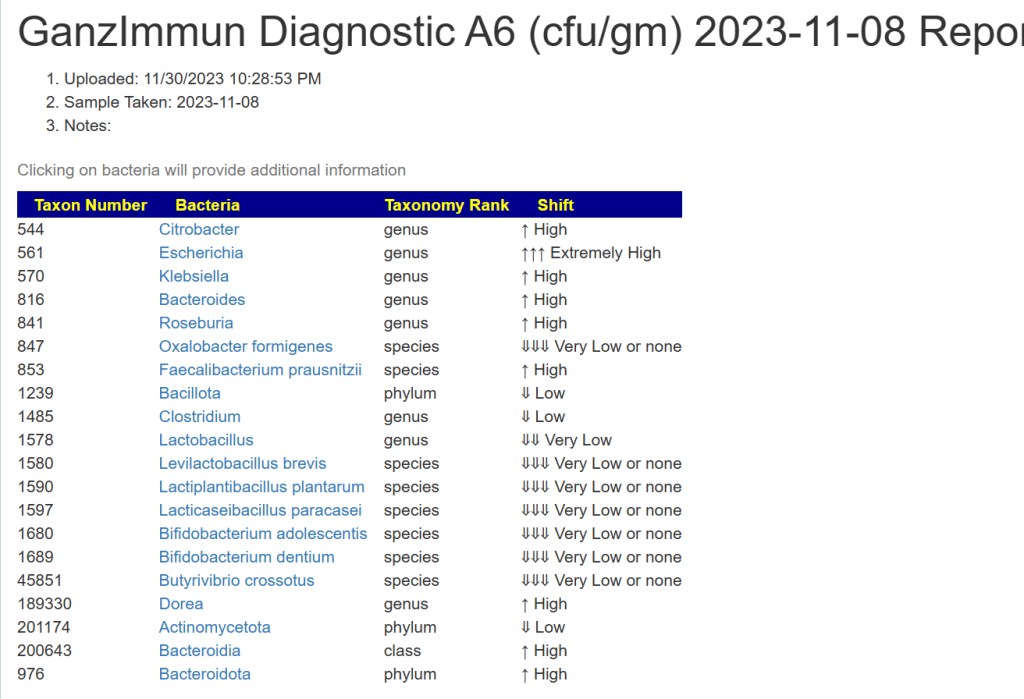

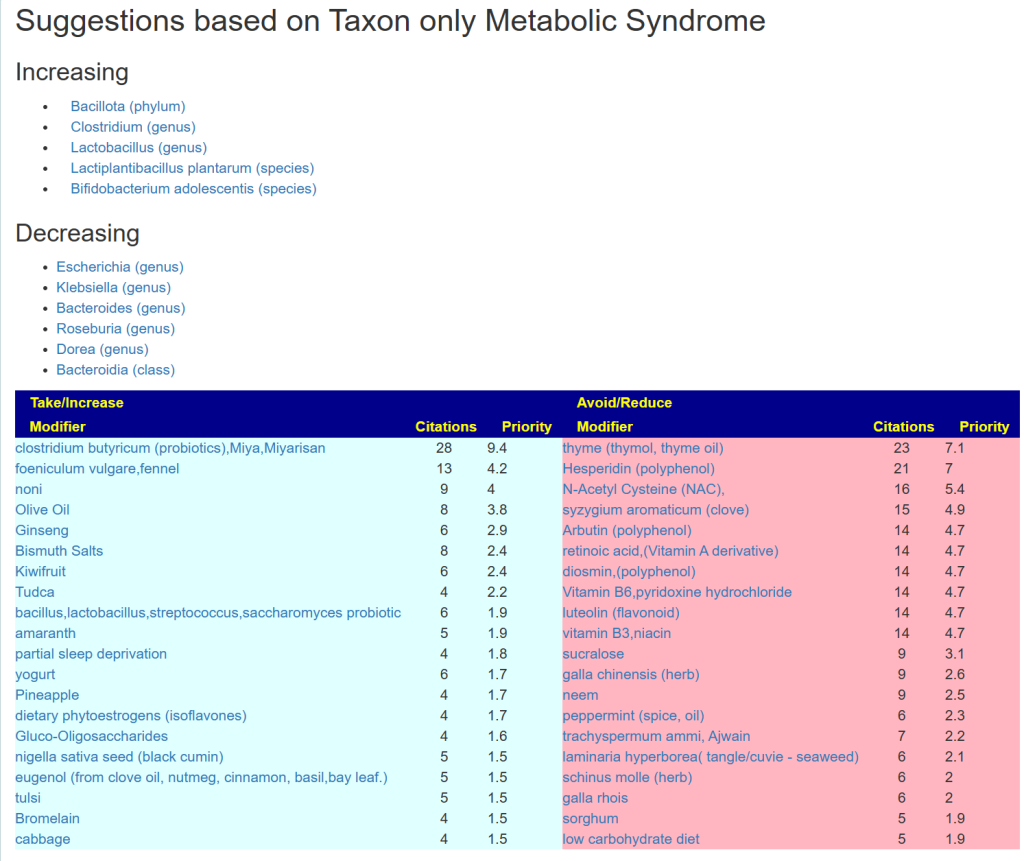






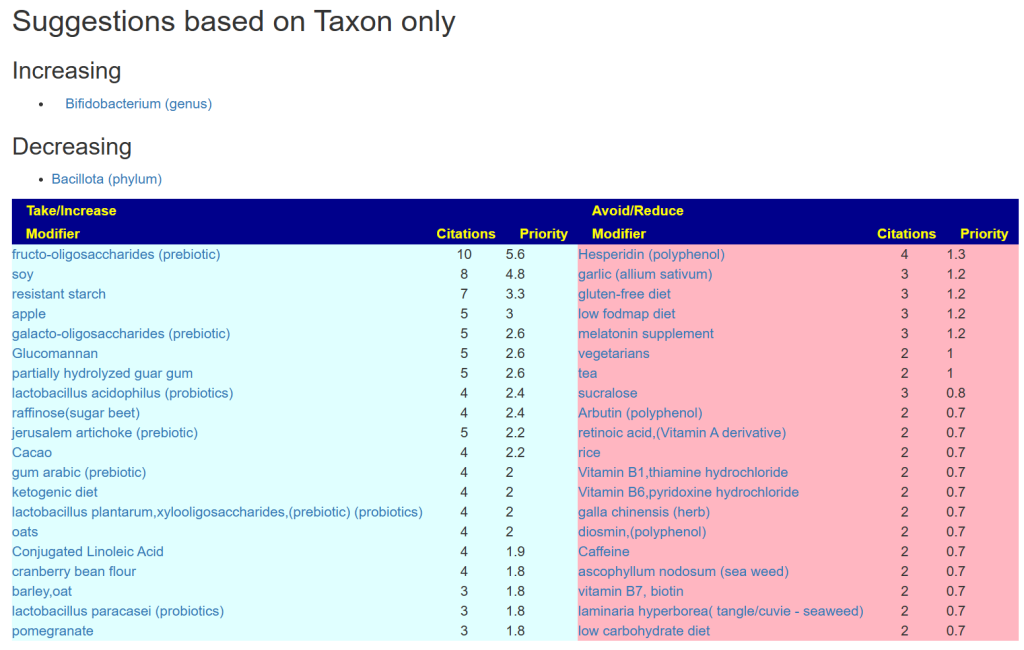

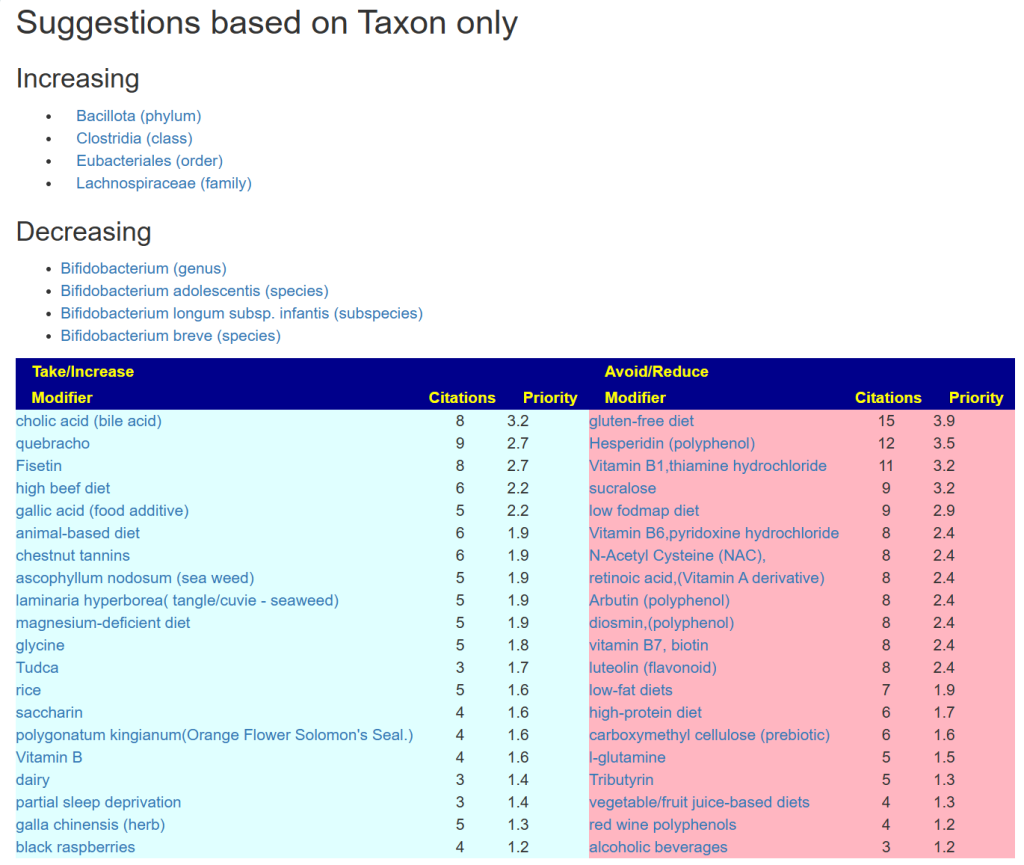



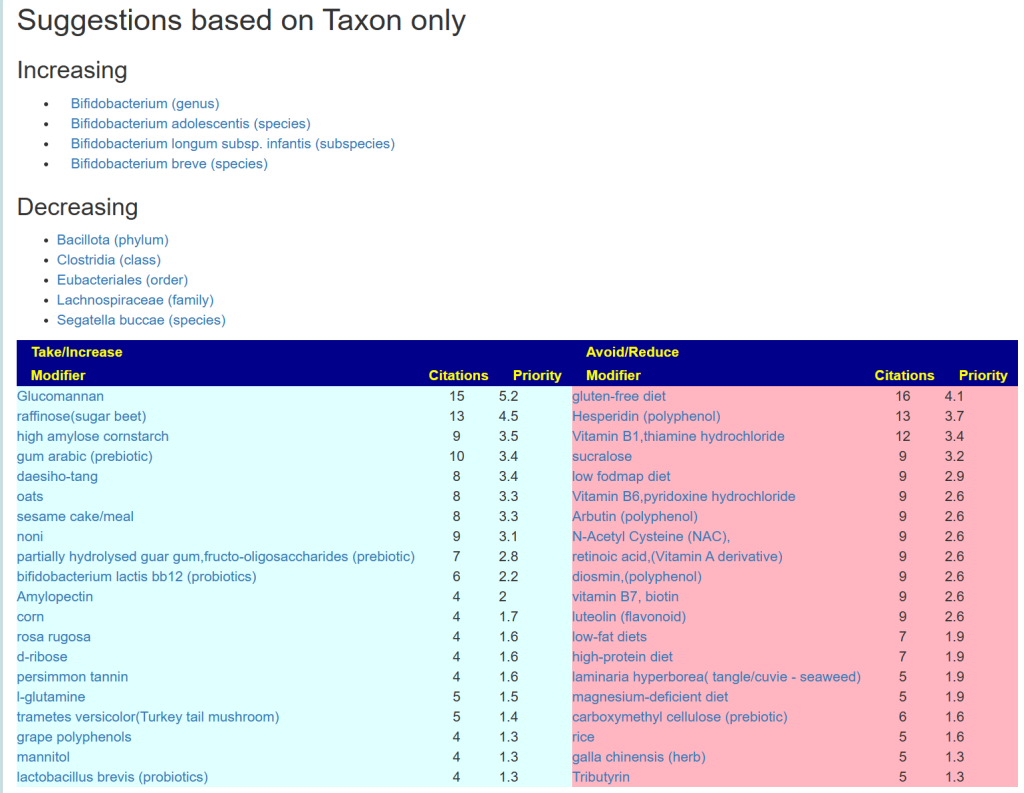

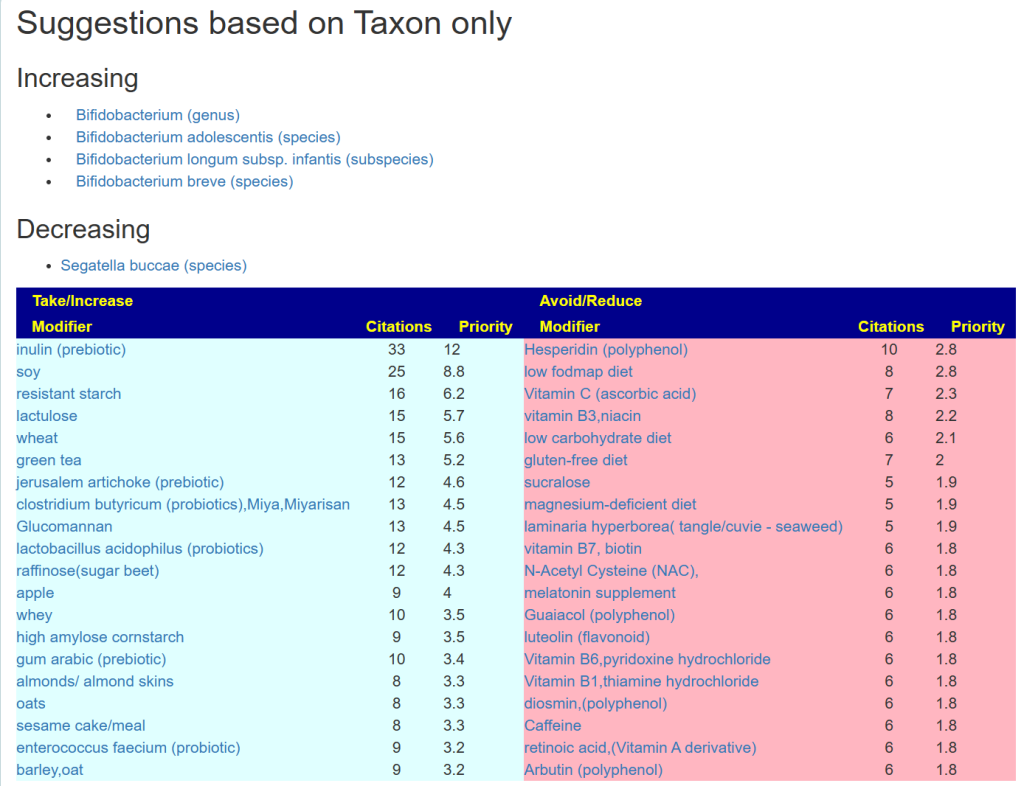







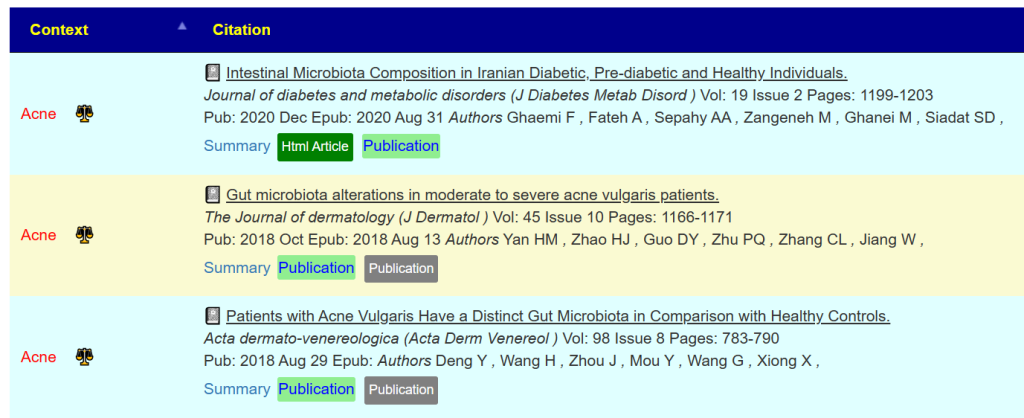
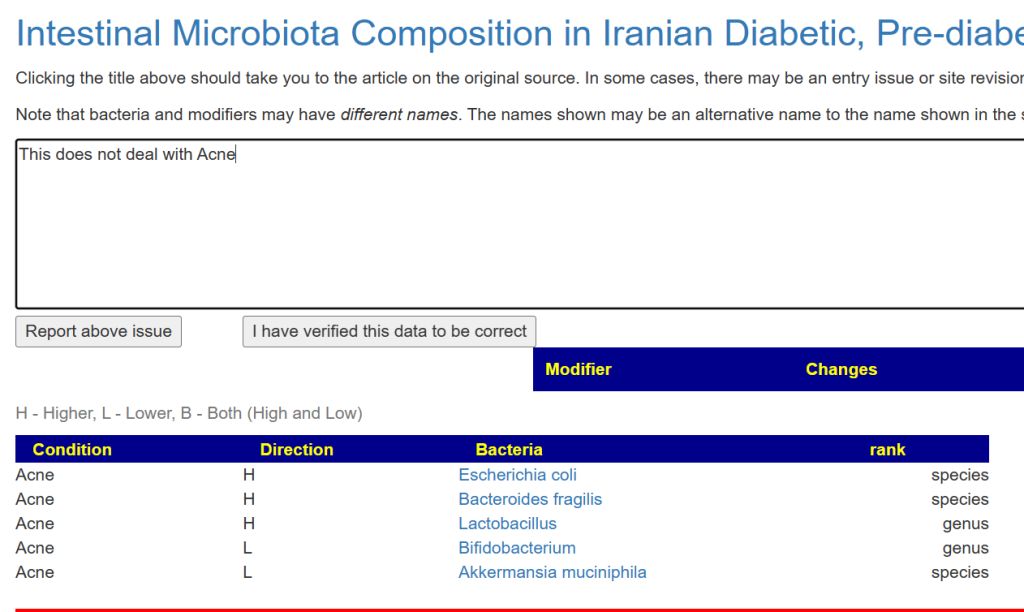
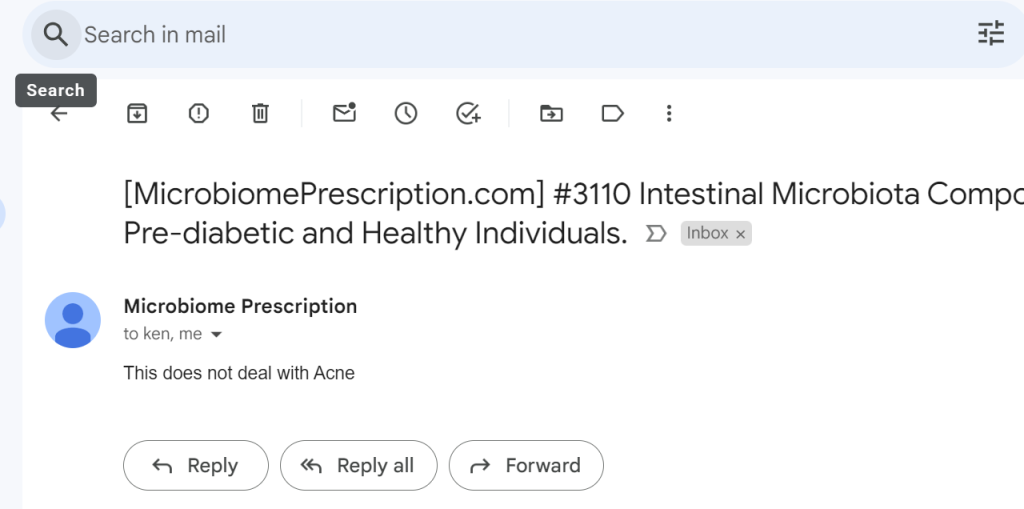
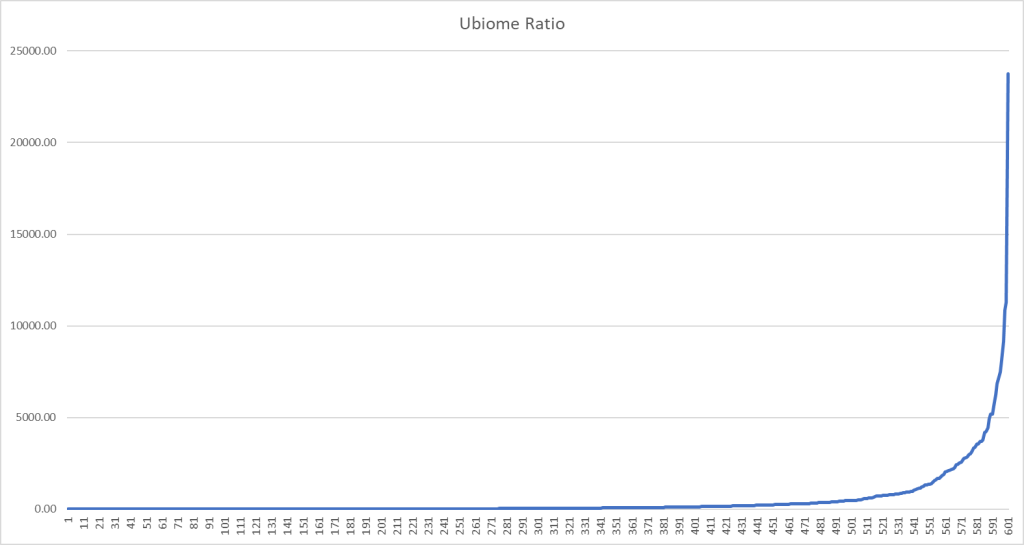
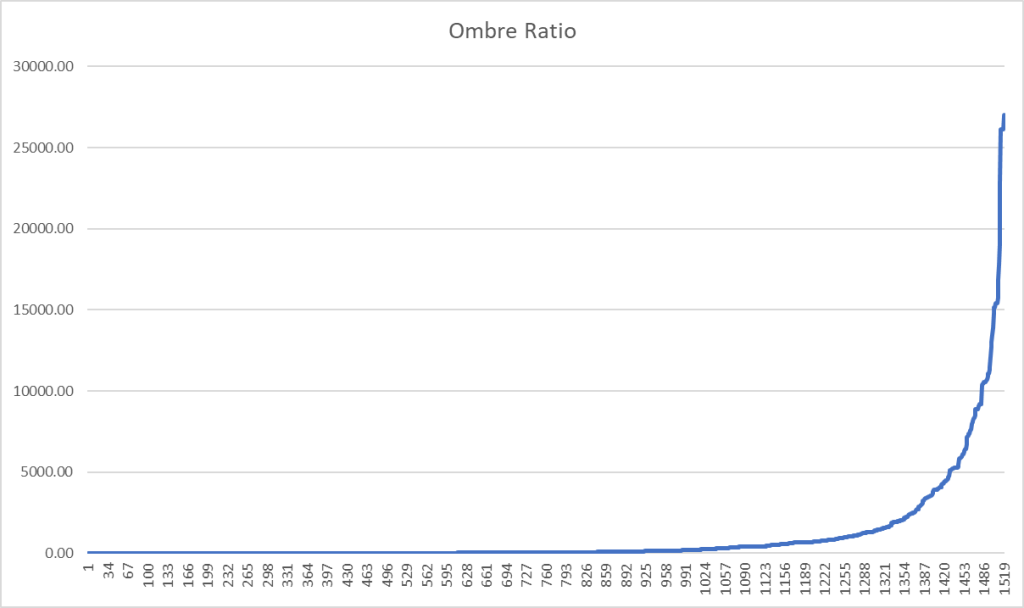
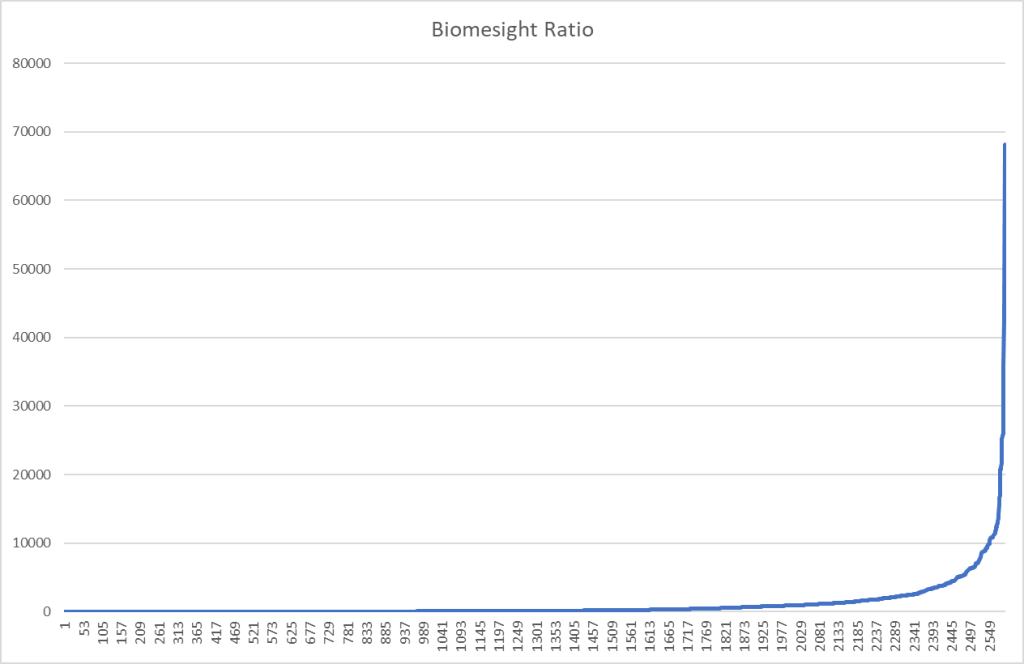
Recent Comments